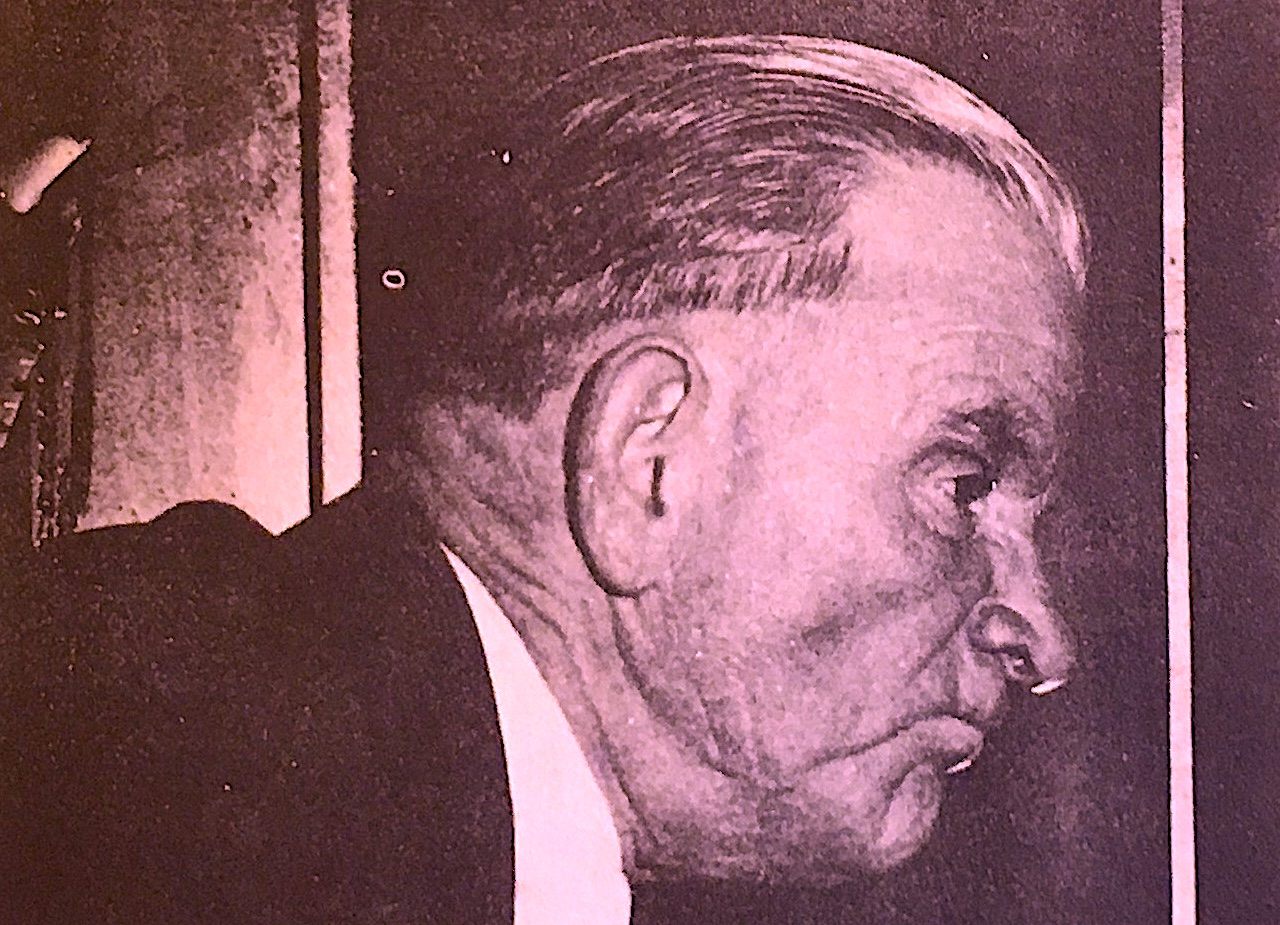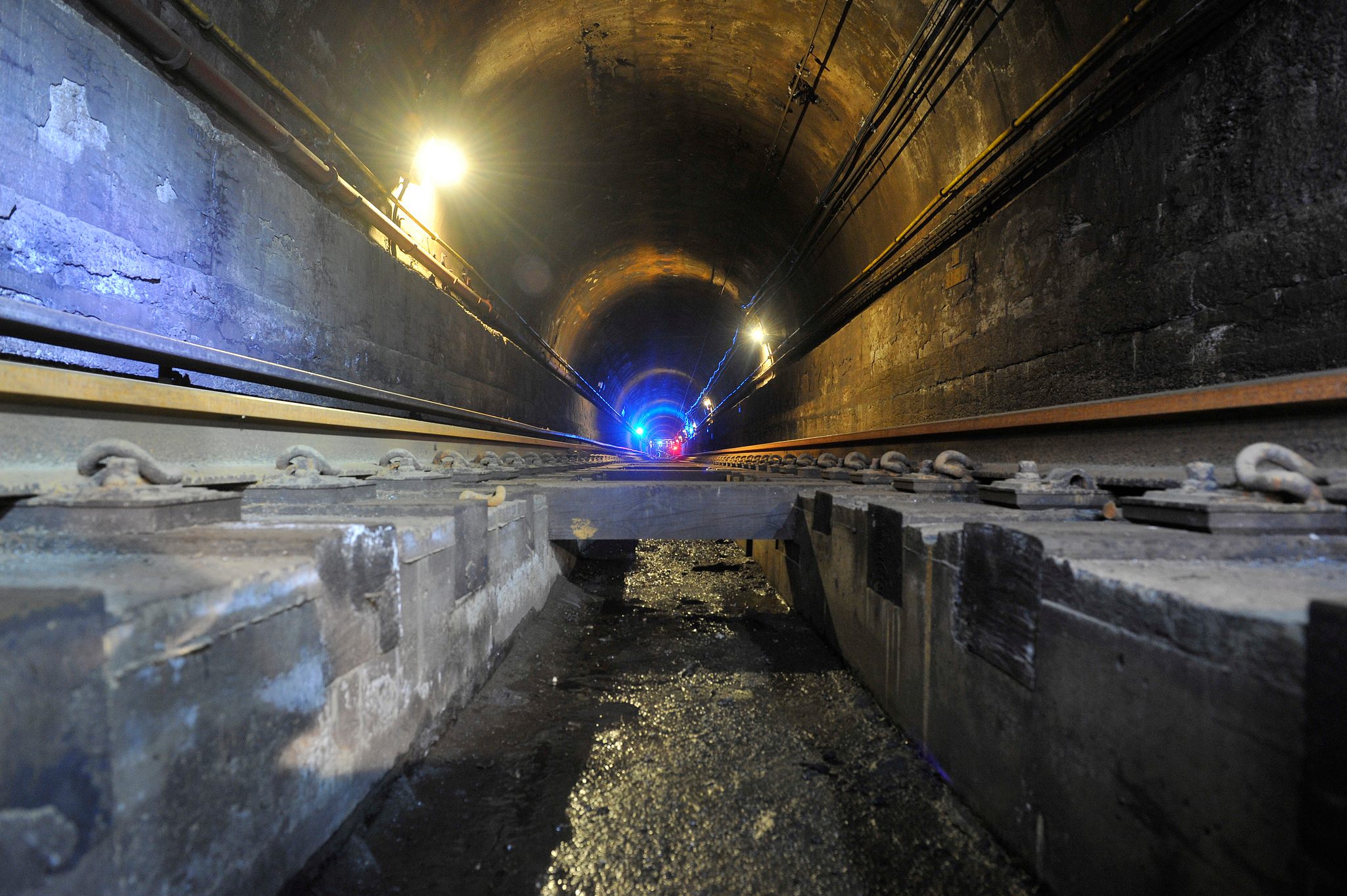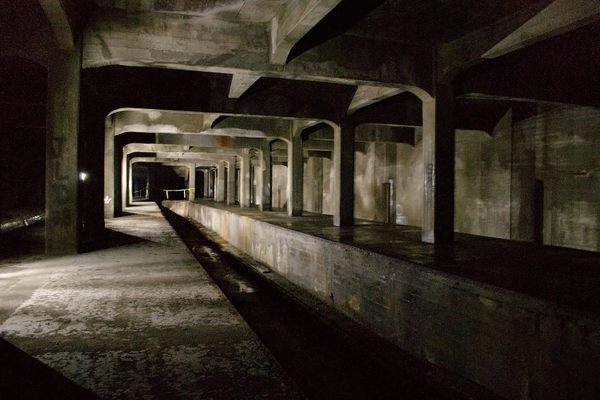The Man Who Used His Nose to Keep New York’s Subways Safe
From gas leaks to eels, James “Smelly” Kelly changed the history of the city’s underground.

Leaky. Smelly. The Sniffer.
These were all nicknames for one of the more unusual figures in New York City’s history, James Kelly. For decades, “Smelly” Kelly walked the tracks using his seemingly superhuman senses, plus a handful of homemade inventions, to track down hazards, leaks, poop, and eels in New York’s sprawling subway system.
Today New York’s subways are equipped with high-tech machines that sample the air, looking for potential warning signs of dangerous gas build-up, or even biological and chemical agents. But in the early days of the subway, which opened its first underground line in 1904, such detection efforts were left to the keen watch of rough-and-ready subway workers. And there was no one better at ferreting out leaks and problems than Kelly.
According to the 1959 book by Robert Daley, The World Beneath the City, which devotes a whole chapter to Kelly, the man with the legendary nose began his sniffing career at the young age of 16. Born in Ireland in 1898, Kelly grew up helping his uncle, a well digger, divine for water. After a stint with the British Navy, where he turned his ear to manning a submarine hydrophone, Kelly ended up in New York and began working as a maintenance engineer for the Transit Authority in 1926.
Almost a cartoon of a gruff New Yorker, Kelly was described in the July 26, 1941, issue of The New Yorker as “a hardy, red-faced, Kilkenny Irishman.” His recorded quotes come off in a stern, affirmative staccato. In Daley’s book, Kelly says that all it takes to be a good underground leak detector are “quick ears, good nose, better feet.”
It only took a few years before Kelly gained a reputation for his uncanny ability to locate leaks that no one else could find. As retold in Daley’s book, Kelly was once called to the Hotel New Yorker to investigate a rotten stench. Engineers had located a sewage leak behind one of the walls, but couldn’t pinpoint it. As the story goes, Kelly walked in, confidently announced that he could locate the broken pipe within a half an hour, and got to work. He flushed a staining agent, uranine, down the toilet, and before long, a portion of the wall began to take on a yellow color, indicating the busted pipe was behind it. Daley quotes Kelly as saying, “After that, I was in leaks for keeps.”
Kelly rose to the official position of Foreman in the Structures Division of the Board of Transportation, and was given a small team of assistants (reports differ as to whether he had five or six on his team) who were available around the clock. Kelly and his team were tasked with walking New York’s underground, looking for signs of leaks. Kelly’s exploits soon became the stuff of local legend.

In that short 1941 profile of Kelly in The New Yorker, titled “Leaky Kelly,” he and his team were said to walk ten miles of track each day, looking for damp spots or other signs of leaks, and using some unorthodox tools of Kelly’s own design to track them down. Kelly was known for a handful of gadgets he had built to help him in his work.
Most notable was the “Aquaphone,” a standard telephone receiver with a copper wire attached to the diaphragm. He would touch the trailing end of the wire to fire hydrants and listen for a hiss that would let him know a leak was near. Another of his creations was a doctor’s stethoscope to which he’d attached a steel rod, which he would touch to pavement to listen for leaks. He is also said to have carried around a map of Manhattan from 1763, which gave him an indication of natural springs and other pre-existing sources of water.
The New Yorker piece shares another common story about Kelly, which was his knack for finding eels and fish that clogged up pipes. In the early 1940s, it wasn’t uncommon for fish to be drawn into the city’s water system from the reservoirs, ending up trapped in pipes and generally mucking things up. Among the creatures Kelly claimed to have pulled out of various parts of the system were a school of 40 killifish that he discovered in a subway bathroom on 145th Street; a two-and-a-half foot eel he’d fished from a sink pipe in a 42nd Street station; and as The New Yorker put it, “a spanking ten-inch trout, which would have been a noteworthy fish, even if it hadn’t been found splashing gaily in a two-foot water main in a Grand Concourse lavatory.” In Daley’s book, Kelly states that all the fish he ever found had been dead, but he otherwise confirmed his strange catches. A New York Times piece about Kelly, published in July of 1950, says that his underground fishing career was cut short once mesh grates were installed to keep large creatures from getting into the water system.
The later Times piece focuses on what Kelly is most commonly remembered for, his nose. In addition to finding water leaks and plumbing issues, Kelly was also responsible for detecting dangerous gas and chemical leaks. From invisible gas fumes that could be ignited by a random spark, to gasoline draining into the system from above-ground garages, Kelly was there to find them out using his allegedly hypersensitive nose.
The most sensational tale of Kelly’s sense of smell was the time he was called to a 42nd Street station to suss out a stench that had overtaken the platforms. According to Kelly’s own account, the smell was so bad it almost bowled him over, but as he got his head back in the game, he pinpointed the source of the reek as… elephants. Amazingly, he was correct. The station in question had been built beneath the location of the old New York Hippodrome, which had been torn down in 1939. The Hippodrome had often featured a circus, and layers of elephant dung had ended up buried at the site. A broken water main had rehydrated the fossilized dung and subsequently leaked into the subway. Until, that is, Smelly Kelly was able to identify it.

In Daley’s book, which captured Kelly at the age of 62, he writes that the infamous sniffer had walked almost 100,000 miles of track, and trained 50 to 60 junior subway smellers in his time. Still, Kelly didn’t think they were as good as he was. Daley writes, “If the New York Subway System has never had a significant explosion or cave-in, part of the reason is Smelly.”









Follow us on Twitter to get the latest on the world's hidden wonders.
Like us on Facebook to get the latest on the world's hidden wonders.
Follow us on Twitter Like us on Facebook